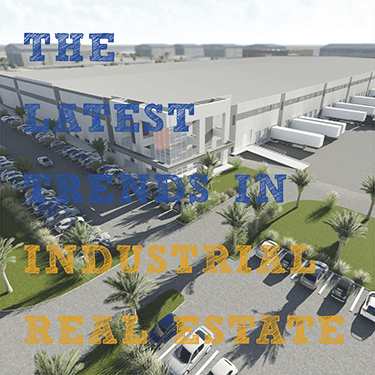Last mile delivery
As many industry specialists predicted at the beginning of 2017, industrial real estate has remained active in South Florida. Nearing the close of the year, a total of 3.2 million square feet of Class A industrial space has been built in Miami-Dade County, of which 2.5 million square feet remain available. According to a Florida International University (FIU) study in partnership with Fairchild Partners, based on data collected over a dozen years, the average demand for square feet of warehouse per person in Miami has been 78 square feet in the past decade. It will be interesting to see how e-commerce and the ever-increasing presence of Amazon affects this calculation. At the average of 78 square feet of demand, the yearly absorption rate proves to be 3 million square feet for our county, not all of which will be new product. That said, we are seeing a rapid increase in our population’s participation in e-commerce just in the past year, which explains the high appeal of properties from among our listings which qualify as last-mile delivery sites.
No signs of slowing down
The 78 square feet per capita demand may well increase to triple digits in a short time span, particularly considering Amazon is opening its Opa-locka mega warehouse (850,000 SF) soon, hiring over 1,000 employees and using countless robots, to ensure increasingly fast delivery of products to local consumers. Fairchild was involved in the leasing of the first procurement center for Amazon in South Florida. Since then, Amazon has been scouting and leasing numerous other facilities apart from the built-to-suit Opa-locka site.
Between the “river of grass” & the ocean
Looming large in the industrial real estate conversation is the increasing scarcity of developable land in South Florida. Of the 2,000 square miles that make up Miami-Dade County, 500 square miles make up the urban area, restricted on the east by the Atlantic Ocean and on the west by the imaginary line known as the Urban Development Boundary (UDB), which protects Everglades National Park from encroaching urban growth which would otherwise affect our fragile and unique ecosystem. Developers are turning to landfills, lakefills, golf courses and even racetracks as alternative avenues for industrial, and other types of, development.
Cubic vs Square Feet
With respect to new Class A industrial product (which are being built with heights at and above 32 feet clear), industry specialists such as the members of SIOR (Society of Industrial and Office Realtors) are increasingly suggesting quoting cubic feet rather than the traditional square feet. Asian and European brokers have been known to discuss properties in cubic meters; however, we have not started to value space by volume in the United States. In markets with limited land for new product, such as our own, the debate regarding quoting three dimensions rather than two will likely continue. If the transition eventually occurs, we anticipate that older warehouse product will continue being quoted in the traditional square-foot measure.

